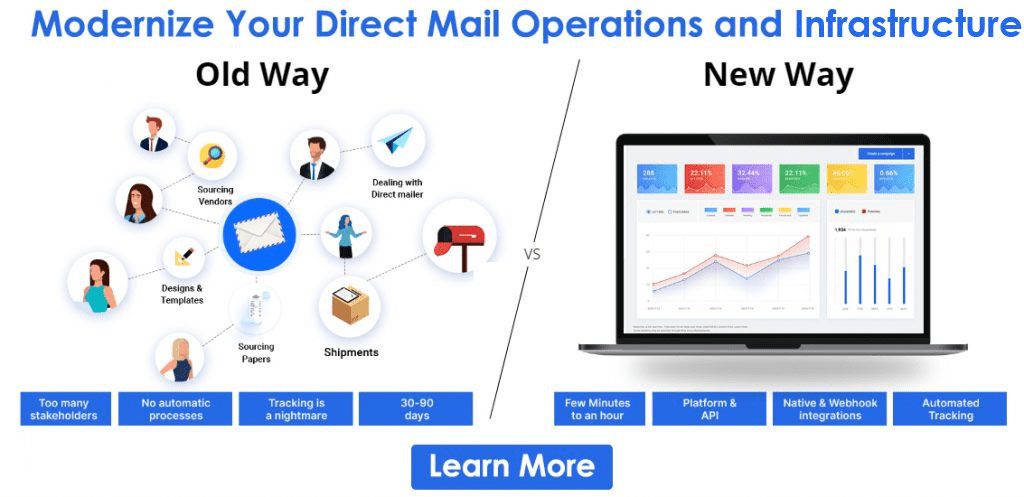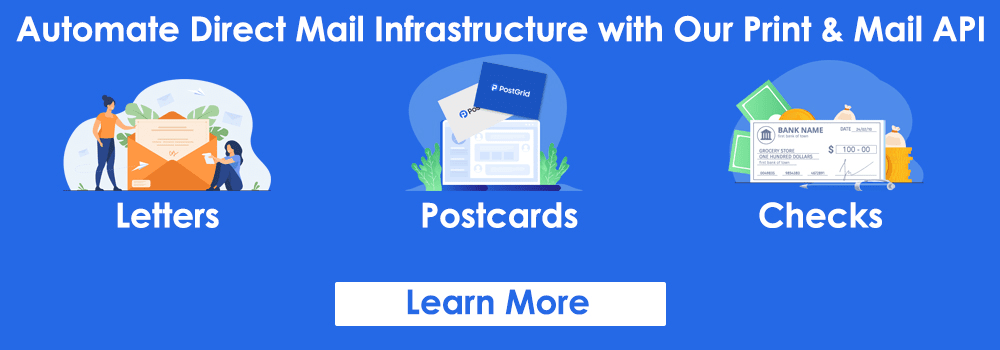What is Positive Pay: A Way to Prevent Check Fraud
Positive Pay: A Way to Prevent Check Fraud
Check payments continue to dominate business transactions despite the growing popularity of various digital payment methods. Most companies prefer using checks for their business transactions because they are a convenient and reliable way for businesses to transfer funds.

For businesses that regularly make check payments, the security aspect of check transactions is crucial. Positive Pay is one of the best ways companies can add a layer of protection to their check payments and protect themselves from check fraud.
But, what is Positive Pay?
How can it help businesses to secure their check payments?
What are the pros and cons of using Positive Pay for business transactions?
We will discuss the answers to these questions and more as we help you navigate through this detailed guide on Positive Pay.
What Is Positive Pay?
Positive Pay is an advanced fraud prevention tool that helps businesses eliminate the risk of check and ACH Fraud. In other words, it protects your business from losing money over fraudulent activities such as counterfeit checks.
It is popularly called a cash management service by banks, and they use positive Pay to detect frauds. Every time the bank receives a check from a specific business, the positive pay system matches the following details against the previously authorized checks:
- Dollar amount
- Check number
- Account number
Suppose if these three components do not match up, the bank does not process the check, and the payment does not go through. The whole process is carried out through an automated tool, and the Cash Management Department monitors the tool itself.
What Is The Cash Management Department?
Cash Management in banking refers to services related to cash flow, and they are usually offered to businesses rather than individuals. Fortunately, there are numerous services that can help businesses with their specific cash management needs.
The role of the Cash Management Department of the banks is to facilitate different cash payment solutions for businesses. Moreover, these solutions must help companies get the best return on cash assets. By doing so, companies can ensure that their cash is used as efficiently as possible.
The primary purpose of the Cash Management Department is to manage the daily cash flow of businesses securely and accurately. Positive Pay is one of the most efficient ways the Cash Management Department of banks ensures business transactions do not fall into the wrong hands.
Understanding How Positive Pay Works For Business Transactions
Positive Pay helps companies safeguard their bank accounts against potential fraud. But you may still have questions about how it works for business transactions. This section explains the steps involved in a Positive Pay process with a simple example.
Let’s consider the case where the customer, Joe Jullian, uses the Bank of America for business banking. Joe also has access to the Bank of America’s Positive Pay service, also called “Payee Positive Pay.” Now, let’s see what happens when Joe makes a business transaction via a check.
When Joe makes a check payment from his business account, the following things happen.
Step 1: Joe (The Signee) Sends The Details of The Check To His Bank
Whenever Joe or the signee makes a check payment, the bank receives the details of the check such as:
- Check number
- Account number
- Dollar amount
The above details are furnished by the signee, which in this case, is Joe. There are two ways Joe can provide this information to his bank. He can enter the information needed for Positive Pay manually in his banking portal or upload it as a file.
Step 2: The Bank Validates The Check Whether The Check Is From Joe or Not
Once the bank receives the check details from its customer, it validates that information. So, here, the Bank of America validates the details of the check furnished by the customer (Joe). However, the validation process is only initiated when the payee or a potential fraud presents a check to the bank.
Step 3: The Bank Processes The Payment Or Blocks The Payment
After the validation process, the Bank of America (or any relevant bank) determines whether to process the payment or block. If the details of the check submitted by the payee match perfectly with the details provided by Joe (the signee), the bank processes the payment.
Suppose the details on the check received by the bank from the payee do not match with the detail furnished by Joe, the signee. In that case, the bank does not process the payment. The bank does not block the payment per se when a check validation goes wrong.
What happens is that the bank marks the check as “exception items” when the validation fails. The bank then notifies Joe, its customer, about the discrepancy in the check details so that Joe can check the “checks” from his end.
Step 4: Joe (The Signee) Reviews The “Exception Items”
Joe receives a notification if there is a mismatch between check details submitted by the payee and the details provided by the signee (Joe). Here, Joe or any signee can log into their account and review the “exception items.”
Sometimes the mismatch may be due to an error on the payee’s side. If that is the case, the signee, which is Joe, in this case, can inform the bank. In such cases, the payment may be processed later.
However, if the details don’t match up and Joe informs the bank that there is a discrepancy, that check does not get processed. It effectively helps businesses to detect suspicious transactions and minimize the risk of financial loss.
What is The Positive Pay Fee In The US?
The banks may charge different fees for providing a Positive Pay service to their customers. Some banks offer complimentary services for selected business accounts. For example, Chase is a bank that offers a complimentary Positive Pay service for eligible business accounts.
But, if you have a business banking account with Bank of America, like Joe, you’d probably have to pay a fee for Positive Pay services. Banks usually charge the Positive Pay fee every month or per check transaction. However, some banks may offer a combination of the two.
The following table should give you a broad idea of how banks charge for the Positive Pay services it offers.
| Bank | Monthly Positive Pay fee | Issued Check Fee | Payee Matching Fee |
| Plumas Bank | $50 Per Account | $0 Per Check | $0 Per Item |
| Capitol Federal | $25 Per Account | $0.03 Per Check | $0.02 Per Item |
| First Premier | $40 Per Account | $0 Per Check | $0.05 Per Item |
Usually, the cost of Positive Pay falls somewhere around $50 per month for a single business account. However, the fee can vary based on the banking service provider you choose for your business. Furthermore, some banks offer waivers of the service fee for the first few months.
The Pros And Cons Of Positive Pay Fraud Protection
One thing is abundantly clear; Positive Pay enables businesses to have advanced security for their bank transactions through checks. However, no system is perfect, and Positive Pay services also have ups and downs.
First, let’s start with the pros or the advantages of using Positive Pay services for business transactions.
Positive Pay Fraud Protection: Pros
Adequate Protection From Check Frauds
Check frauds are not uncommon in the US. It is relatively easy for individuals and companies to secure their check transactions as long as they scarcely use check transactions. But for businesses that practically depend on check transactions, a protective service like Positive Pay is necessary.
Moreover, most B2B businesses still prefer checks as their mode of payment. When a company makes numerous check transactions it becomes increasingly difficult to track each check. As a result, it becomes easier to commit a check fraud and cover its tracks. Furthermore, such scams may go unnoticed until the accounts are checked later.
Positive Pay puts businesses at ease by providing an adequate safeguard against check fraud, counterfeit checks, and other liabilities. Although the layer of protection is not perfect, it still helps businesses control their check security.
Positive Pay Fraud Protection: Cons
Requires Time And Effort Of The Business
In this age of automation, it can be inconvenient for businesses to upload or update the check details to their banks manually. Every time a company gives out a check to a payee, they have to record the data and provide it to the bank.
Businesses usually do this manually or upload a file to the relevant bank. Companies can easily do this by using an automated system like PostGrid to print their checks. Using an automated system enables you to save the check information and conveniently access the same.
It means businesses can easily furnish the required information to their banks within a matter of minutes. However, it still requires time and effort from the business owners, and they may often forget it among their various duties.
Banks May Return Items If Businesses Miss The Review Deadlines
The more pressing challenge or downside of using the Positive Pay service for businesses is the Review deadlines. When it comes to Positive Pay, the most nerve-racking thing about it is when you miss a review deadline, and the bank returns the item.
Usually, banks prefer businesses to let them know whether or not they want the bank to return/process a flagged item. More importantly, companies must let the bank know their decision before a specific time. Sometimes this time can be 12 PM and other times it can be 4 PM.
If your business fails to review an item and tell the bank whether to process it or return it, your bank will decide it for you. Furthermore, if you don’t meet the review deadline, the checks get returned to you. Although it might be ideal from the security perspective, it can potentially delay payments, create unnecessary slowdowns and financial problems for your company.
What is Reverse Positive Pay?
Most businesses, especially those in the B2B industry, are familiar with Positive Pay verification. However, Reverse Positive Pay may be a new concept to many companies. It is a security measure similar to traditional Positive Pay. It helps you enhance the security of your business’s check payments.
In the case of Reverse Positive Pay, the process involved is similar to traditional Positive Pay. The difference between the two is that instead of the bank validating the details on the checks, the businesses can do it themselves.
It means businesses or check issuers can monitor their business checks. In this case, the bank notifies the company about any bank checks presented to them. Companies receive these notifications daily, verifying the bank checks against the company records.
Default Cashing Of Checks
In Reverse Positive Pay, if the bank does not get a response, it will go ahead and cash the check. It is not a secure way to process checks for business organizations. Hence, it is not nearly as reliable as traditional Positive Pay.
However, it does have its upsides. For one thing, it does not slow down the payment process like the traditional Positive Pay does when businesses miss a review deadline. But, the main reason most companies prefer Reverse Positive Pay is that it is more affordable and saves businesses a considerable sum of money.
Positive Pay or Reverse Positive Pay: Which Is The Best For your Business?
Positive Pay and Reverse Positive Pay are similar tools that enable businesses, especially B2B, to safeguard their business transactions. Both of them effectively protect you from check frauds and undesirable liabilities as long as the execution is proper.
Although both have certain similarities in their process and results, they are different. There are several technical differences between Positive Pay and Reverse Positive Pay.
Reviewing Authority
The main difference between the two is the reviewing authority. We know that both processes involve reviewing the details on the bank checks made out for business purposes.
In Positive Pay, the information on the bank checks is reviewed by the bank. But, the review process in Reverse Positive Pay services is carried out by the company itself. In this case, the bank notifies the business organization when it needs to process checks.
There is a payment threshold in Reverse Positive Pay that the company can set. The bank notifies the company for check processing only when this threshold is reached.
Handling Of Flagged Checks
Another significant difference is handling flagged checks. There is a review deadline in both traditional Positive Pay and Reverse Positive Pay. It means that the company must review the flagged bank checks within a specified time limit specified by the bank.
When it comes to traditional Positive Pay, if the company fails to review the flagged checks within the specified time, it gets returned to the issuer. Such an approach offers better security against fraudulent bank checks. However, it also means that genuine checks can often get involved in the bulk, leading to payment delays and other problems.
In contrast, when a company fails to review the flagged checks in Reverse Positive Pay, the bank does not hold back the payment. Instead, the bank will process your checks, and the payment flow is not disrupted, which is the advantage here. However, this compromises the security of the check processing and makes you susceptible to check fraud.
Situations Where Positive Pay Services May Not Work For Your Business
Positive Pay is a great way to enhance the security of your business payments made through checks. It can significantly boost the security of check payments and minimize check frauds for businesses. However, Positive Pay services may not help you in all situations. Some of these situations where the effect of Positive Pay is limited are listed below.
Over-The-Counter Checks
Traditional Positive Pay was primarily designed for validating scanned or transmitted checks. Hence, many Positive Pay systems don’t deliver the desired results when processing checks handed over in person.
Many banks do not offer verifications for over-the-counter checks. It is a loophole that can lead to potential fraud. One way to avoid this is for businesses to ensure that they use a top-quality printer like PostGrid for printing their business checks.
Advanced check printing software like PostGrid enhances the security of printed checks using advanced Microprinting, thermochromic ink, and more. Such advanced printing techniques are not easy to reproduce or create counterfeit bills.
Payee Verification
Despite the advanced solutions today, most Positive Pay services do not cover payee verification. Most Positive Pay only verifies checks through the information it contains, such as check numbers, dollar amounts, dates, etc.
Thankfully, some banks provide a Payee positive Pay. However, bank Positive Pay usually comes with an additional fee. Hence, companies should first analyze whether their unique business needs include Payee Positive Pay before splurging money.
Formatting
The peculiar thing about transmitted checks is that they can come in a wide range of file formats. It is also worth noting that every bank doesn’t use the same or similar standardized form. Furthermore, the same bank can use various design formats for their checks.
The best way to ensure a standard format for your business checks is to custom print it through automated print solutions like PostGrid. By printing the bank checks yourself, you can set a standard layout to make check processing more effortless for you.
Furthermore, it can significantly simplify your Reverse Positive Mail process with such capabilities. To top it all, you can use PostGrid to deliver your business checks directly to the payees and even schedule them if needed.
Conclusion
Businesses that rely on check payments must learn and understand what is positive Pay and how it helps minimize check fraud. Positive Pay and Reverse Positive Pay can help businesses avoid check frauds and other liabilities.
Furthermore, Positive Pay can only work with the participation of the business entity that issues the check. It involves reviewing the check details from the issues and comparing it against the check banks receive from the payee.
Businesses must keep track of their check payments accurately to ensure an effective Positive Pay system. Even then, companies may run into some problems because the Positive Pay system has its limitations. For example, the Positive Print system does not cover over-the-counter checks.
Businesses should use an advanced print system like PostGrid. Powerful tools like PostGrid print checks with security features like micro printed borders and thermal thumbprints.
Furthermore, PostGrid’s system enables you to schedule printing and delivery of your business checks to minimize any delays. And since the whole process is automated, there is no error and no compromising the security of your check payments.
Ready to Get Started?
Start transforming and automating your offline communications with PostGrid
The post What is Positive Pay: A Way to Prevent Check Fraud appeared first on PostGrid.
Via https://www.postgrid.com/what-is-positive-pay/
source https://postgridplatform.weebly.com/blog/what-is-positive-pay-a-way-to-prevent-check-fraud




Comments
Post a Comment